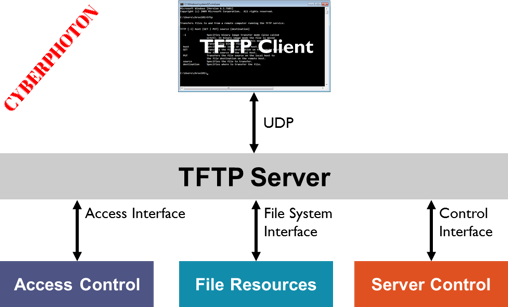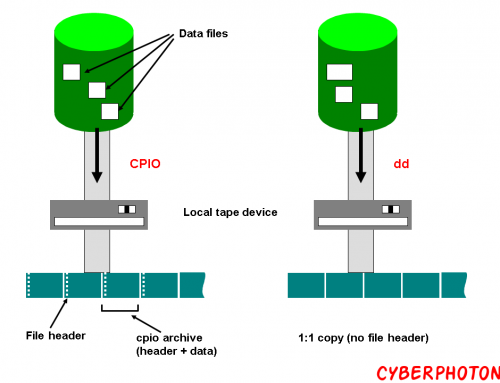(Image Source Google)
Trivial File Transfer Protocol (TFTP) is an Internet software utility for transferring files that is simpler to use than the File Transfer Protocol (FTP) but less capable. It is used where user authentication and directory visibility are not required. TFTP uses the User Datagram Protocol (UDP) rather than the Transmission Control Protocol (TCP). TFTP is described formally in Request for Comments (RFC) 1350.
1. Install tftp-server
TFTP server can be installed using following command, where xinetd is necessary.
# yum install tftp tftp-server* xinetd*
Then edit /etc/xinetd.d/tftp – set disable to no and add -c option into server_args if you need to upload files to TFTP server from client.
# vim /etc/xinetd.d/tftp
service tftp
{
socket_type = dgram
protocol = udp
wait = yes
user = root
server = /usr/sbin/in.tftpd
server_args = -c -s /tftpboot
disable = no
per_source = 15
cps = 80 2
flags = IPv4
}
2. Enable and Start TFTP Service
[root@server0 home]# systemctl start xinetd After these two commands, permanent links will be made for xinetd and TFTP services. In RHEL 7.0/CentOS 7, the SELinux is not supposed to be disabled(the system will abort booting if you disable SELinux). So the TFTP read and write must be allowed in SELinux. By default, the SELinux uses enforcing policy, which does not accept any change. To make any change to SELinux, first modify /etc/selinux/config and change the policy to permissive: # vim /etc/selinux/config # This file controls the state of SELinux on the system. :wq! Then reboot the system, and check SELinux status: # sestatus Then check the tftp permissions in SELinux: # getsebool -a | grep tftp If the TFTP write is off as shown above, enable it with setsebool command: # setsebool -P tftp_anon_write 1 Above changes to SELinux are permanent, so no need to change any SELinux config files any more. Allow TFTP services, following line should be added to /etc/sysconfig/iptables #vim /etc/sysconfig/iptables -A INPUT -m state –state NEW -m udp -p udp -m udp –dport 69 -j ACCEPT Then restart firewalld using command firewall-cmd –reload. # firewall-cmd –reload A more standard way to allow TFTP is to use firewall-cmd command: # firewall-cmd –zone=public –add-service=tftp –permanent Where the –permanent option is used to permanently enable the TFTP port. Command firewall-cmd –reload is needed every time changing the firewall config. To check the status or enable firewalld, following commands can be used: # systemctl status firewalld
[root@server0 home]# systemctl enable tftp
[root@server0 home]# systemctl start tftp
3. Configure SELinux
# SELINUX= can take one of these three values:
# enforcing – SELinux security policy is enforced.
# permissive – SELinux prints warnings instead of enforcing.
# disabled – No SELinux policy is loaded.
SELINUX=permissive
# SELINUXTYPE= can take one of three two values:
# targeted – Targeted processes are protected,
# minimum – Modification of targeted policy. Only selected processes are protected.
# mls – Multi Level Security protection.
SELINUXTYPE=targeted
SELinux status: enabled
SELinuxfs mount: /sys/fs/selinux
SELinux root directory: /etc/selinux
Loaded policy name: targeted
Current mode: permissive
Mode from config file: permissive
Policy MLS status: enabled
Policy deny_unknown status: allowed
Max kernel policy version: 28
tftp_anon_write –> off
tftp_home_dir –> off
# setsebool -P tftp_home_dir 1
4. Configure firewalld
# systemctl enable firewalld
# systemctl start firewalld







